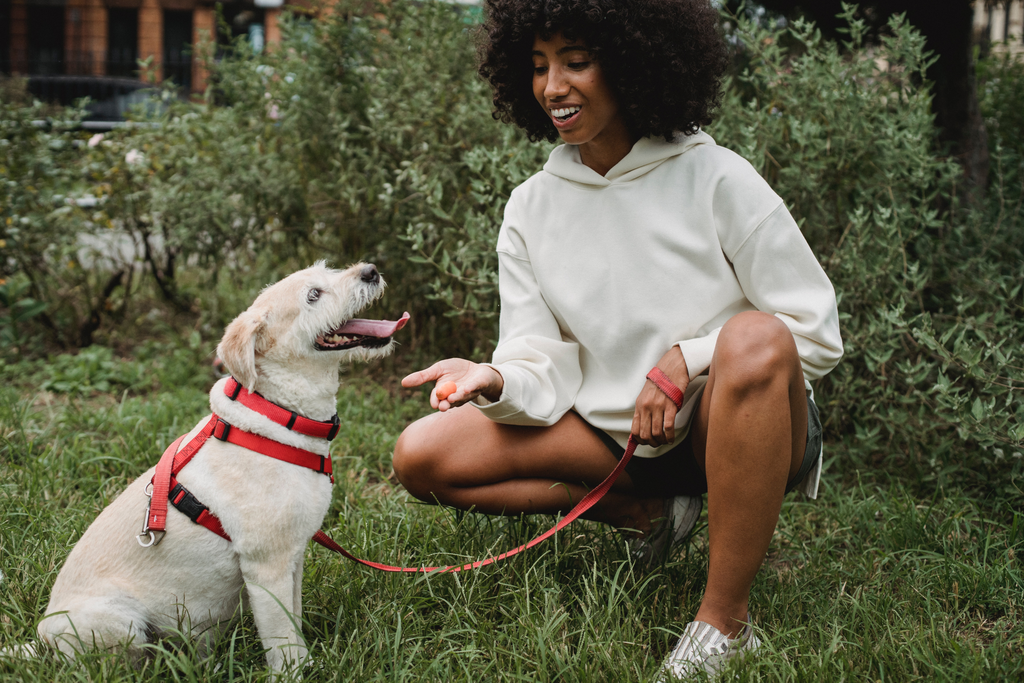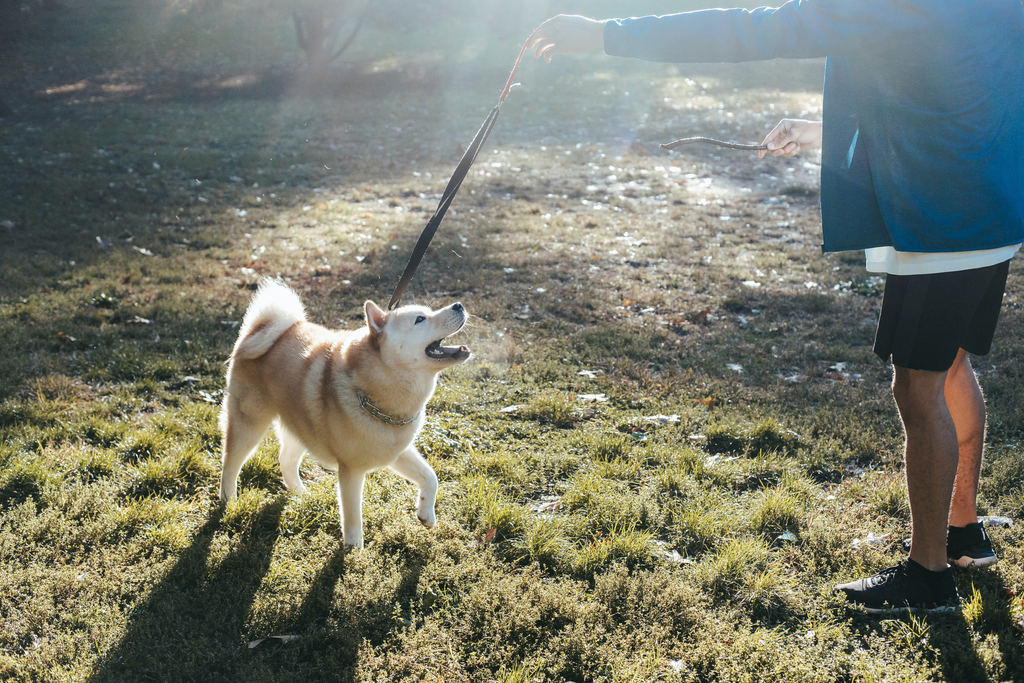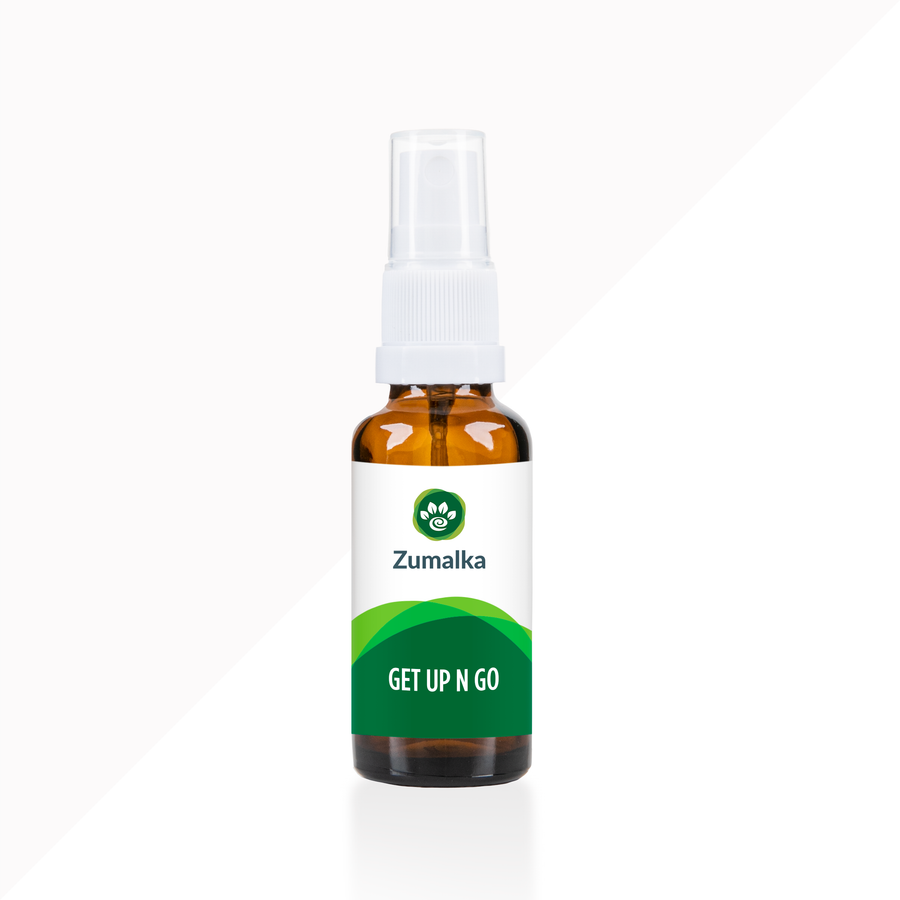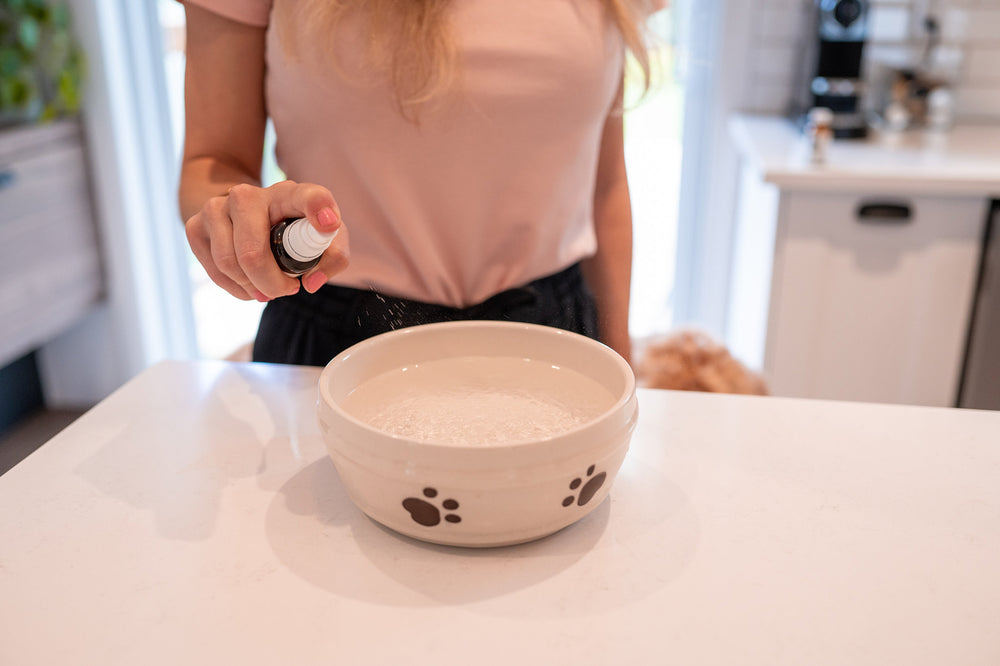How Do I Safely and Effectively Help My Dog (or Cat) Lose Weight? 2024
Meet Bowzer the Dog. Let's call him either "Bowzer" or "Dog." He is one of my patients. He is a mixed-breed pooch that weighed 32 pounds when I took him to my house. I was certainly not his favorite person in the world.
However, he wasn’t also my favorite patient because someone would always end up bleeding by the time he left our office! But this time Bowzer had really done it! He had tangled with a wild raccoon and was in bad shape.
With no previous rabies shots, he would have to be quarantined. Long story short, even though I wasn’t a huge Bowzer fan, he came to live with me for six months!
This is a post about how to help Dog lose weight—and other useful bits and pieces
His ideal body weight is 18 pounds, so at 32 pounds, he was a long way off! Our relationship eventually blossomed into friendship and we had a blast together. Six months flew by! When the time came for Bowzer to be reunited with his family again after “Fat Camp” at my place, he weighed 19 pounds!
Many dogs (and cats) are a few extra pounds above their ideal weight
A recent study shows that about 40% of our furry friends need to lose weight. In most cases, WE are in total control of our pet’s weight. Remember, an overweight cat or dog is already more prone to health problems like high blood pressure and diabetes.
Logically, it boils down to just two things: decreasing their calories and increasing their exercise. Sounds easy, right? Well, maybe not, or that number wouldn’t be 40% and rising. And what if there is more to it than that?
It is crucial to take note that obesity in animals puts them at an increased risk of serious health issues sooner or later. This is the biggest reason why we've put together this post as a way to encourage pet obesity prevention among dog owners, cat parents, and animal lovers in general.
Step 1: Decreasing Calories ≠ Starving to Death

Decreasing calories is perhaps the most straightforward approach when you're helping a dog lose weight. Take the total amount of food that you are feeding and cut it by about a third. This is where I usually start. Most pet owners are shocked ("horrified" might be a better word) at just how much will be left out.
But think about it. If your pet becomes overweight on 3 cups of food a day, this is too many calories for him. An appropriate amount of food might be 2 and a half cups a day. But that is his “maintenance” amount of food.
Cutting his food by just half a cup will allow him to maintain his current weight. Logically, you will need to feed him considerably less food if you want him to lose weight. Once he loses an appropriate amount of weight, we will increase his food.
Crucial feeding guidelines to keep in mind when you provide small meals
A word of warning, though. Taking the food you are currently feeding him and dramatically reducing the amount is not always a good thing to do. This especially applies if you are decreasing to well below the recommended amount on the bag.
This is because most nutrients in your dog's food—regardless if you're going for wet food or dry food—like vitamins and minerals, are balanced to give a recommended daily allowance. So if you're feeding well below what the label recommends, your dog may not be getting all the nutrients that he needs.
A few reminders when switching to a new diet plan

Switching to new food is often a good idea. There are many good diet foods out there on the market, too many to list here actually. Some have increased fiber to make your pet feel more full and therefore less hungry. Others have higher protein and less fat and carbohydrates, kind of like people low-carb diets.
In general, I choose the higher fiber diets for my older, less active patients (senior dogs) and the higher protein diets for younger, more active patients. A lot more research has gone into the prescription formulas than the grocery store formulas and I find my patients shedding off excess weight much more consistently on the prescription diets.
However, I'd just like to emphasize as early as now that they are a bit expensive. So some people just use them to get the weight off and then pick a more affordable food for maintenance afterward. This strategy is often used on older dogs.
And no, simply serving plain canned pumpkin as a "new diet" for weight loss won't cut it, though.
How metabolism is linked with a dog's weight
This is a good time to talk about metabolism. Remember your friend in college that ate three huge meals a day, ate more pizza than anybody else, always had dessert and never gained a pound? Different people have VERY different metabolisms.
Why should dogs be any different? Well, guess what, they’re not.
I have a 20-pound dog and a 10-pound dog. My 20-pounder eats exactly FOUR times as much as my 10-pounder. If you worry about your dog having an unusually low metabolism, there may be a solution to help regain balance. I’ll touch on that secret a little later on.
Keep in mind also that dog food companies want to sell dog food. The faster your dog eats up their food, the faster you will buy more from pet stores, which can potentially lead to weight gain. I’m not saying that dog food companies want your dog to be an unhealthy weight, but the draw to sell more dog food may influence that upper range of “how much to feed” on the bag.
Step 2: People Food Can Lead to Weight Gain

I think it’s a well-known fact that people food isn’t great for dogs. Sure you may argue that your canine friend or cat eats only a "bit" of it, but you will never really know how many calories he's going to have in the process.
Since you shouldn’t feed your normal-weight dog much people food, you definitely shouldn’t feed your overweight dog (or chubby cat) much people food. Much? She said “much!" Break out the hot dogs and hamburgers! Okay, you caught me. Yes, it is my personal opinion that feeding a little people food is not awful for your dog, but I have strict rules.
Excessive people food can harm your pet's wellness and healthy weight
Always be sure that "people food" makes up less than 10% of your dog’s entire diet. His absorption of vitamins and minerals may be overly restricted, which can put a strain on your dog's body condition if not corrected. This is what I worry about with too much people food.
Be careful choosing what kind of people food for your dog. Some things are straight-up toxic—such as chocolate, grapes, raisins, anything containing xylitol, onions, especially for cats, etc.—so make sure to avoid these and most high-calorie treats that can lead to excess pounds. In general, things that are recommended for people on a diet are usually okay for that 10%.
Good choices are carrots (most dogs really like carrots), apples, cottage cheese, green beans, eggs, pumpkin and oatmeal. No, hot dogs and hamburgers are not on the list for obvious reasons. However, given that your dog is a carnivore, he also loves protein. Cooked chicken and salmon will be fun treats for him.
For most of my overweight patients, I want entirely off of people food until they reach an appropriate weight. The reason is a little different than you might think. You see, his blood sugar doesn’t drop like ours does and won't say no to a full food bowl when he sees it.
Reach out to a veterinary medicine practitioner
Just to emphasize, people food may not be the most appropriate option when it comes to setting up a weight loss diet for your pet. If you're looking to really make your dog lose weight, having the right food options is crucial.
I recommend working with your veterinarian to determine a workable list. Your vet may want to do some tests like checking your fur baby's body condition score to build a suitable foundation for healthy weight loss. Here are a few more quick guidelines to keep in mind if your pet has an underlying condition:
-
Dogs with kidney problems should avoid high-protein foods.
-
Dogs with cholesterol issues should avoid eggs.
-
Dogs that are predisposed to pancreatitis should always avoid people food.
Step 3: Increasing Exercise = Losing Weight

When you help your dog lose weight, it is important that you make the whole thing fun. Take advantage of this! Most dogs won't mind being engaged in activities that get their heart rates up. Having daily walks is a good start. Chances are you'll also feel better with more exercise yourself!
I'd like to stress “daily” because if you shoot for doing it each day, you'll usually get a good walk in about 3-4 times a week because of the weather and life in general. If you physically can’t or don’t have the time, I often recommend finding an energetic teenager in your neighborhood or family who may need a couple of extra bucks and hiring them.
A memorable dog's weight loss story
One of my sweetest clients is a little old lady who was in a really bad car accident. She lived through it and always came in with a smile on her face as she described her latest complicated orthopedic surgery. She lived alone and needless to say, couldn’t walk her dog anymore. Charlie was a healthy 4-year-old Schnauzer that I usually only saw once a year.
So when she brought him in for his annual exam he had gone from a healthy 20 pounds to a very unhealthy 34 pounds. Cutting his calories because he wasn’t getting as much exercise was an option for Charlie, but heck, that’s no fun for him.
Many people wanted to help this poor sweet lady (family members, neighbors, coworkers) but didn’t know how. I asked her if she wanted me to post a plea on her Facebook page to help walk Charlie. She said, “Absolutely” and that’s all it took. We gave Charlie fewer calories until he reached a good weight. Thankfully, that dog's health improved over time!
Align your obese dog's diet with his daily activities (works for an obese cat, too)

Look around for dog parks where you can let them off the leash and run for a while. Dog parks with a bunch of other different-sized dogs are not my favorite because you can never tell who isn’t going to get along.
We have local dog parks where you can rent a fenced-in area for $1 an hour and throw the frisbee or a tennis ball to encourage him to move around. Leash walking on trails around dog parks is fun as well because of all the smells for your dog.
Try low-impact exercises for senior dogs and cats
But remember that each dog (or cat) is different. An older dog with arthritis may enjoy swimming, which is easier on his joints. You may worry about your really obese dog sinking like a rock when he tries to swim. Fat is actually very buoyant. So most overweight dogs can still swim quite well, making it one of the best exercises for them. You obviously want to monitor your dog closely, especially when you first start swimming.
Is It Easy to Help Your Dog Lose A Few Pounds?

We know there are many of you out there that are already doing your best to keep your pets at their ideal weight. Has something happened to create an unbalance in his system? Or is there perhaps a medical reason behind his weight?
Testing your pet for underlying conditions can help your dog or cat lose weight
If you are feeding your dog below the recommended amount and your dog continues to gain weight, have him tested for hypothyroidism. Not to get too technical, the thyroid gland is responsible for setting the metabolism. It’s never “great” to have a disease, but I am always kind of pleased when I diagnose a dog with hypothyroidism.
Primarily because I know I am going to make that dog feel a LOT better once I get him treated and he will finally be able to lose weight easily while probably eating more. Treatment (both traditional and homeopathic) is easy and effective.
Hypothyroidism may be inadvertently causing weight gain in pets
If you are reading this and are suspicious, read on! My weirdly-low-metabolism 10-pound dog mentioned above isn’t hypothyroid. She is only 3 years old though, so I will continue to test her at least yearly. Don’t “hang your hat” on one test. Many dogs that are low-metabolism test negative (or low normal) when they are younger and then suddenly test positive when they are older.
One more thing about testing for hypothyroidism: be sure to get more than just a T4 level. A dog’s T4 level can be low for about a zillion different reasons, not just hypothyroidism. Most veterinarians will recommend a “Thyroid Panel” that includes a lot of things like T4, T3, TSH, Autoantibodies, etc.
The full panels are ideal, but without turning this into an endocrinology lesson, make sure you at least get a T4 and a TSH level.
Homeopathy = The Big Secret to Safely and Effectively Help My Dog Lose Weight?!

Remember when I said “There are no big secrets” to losing weight? Well, that’s not entirely true. Homeopathy isn’t really a secret, but many people have never heard of it. We have already seen very good results from a lot of pet parents worldwide. You can think of it as a natural strategy to help your dog lose weight in a healthy way.
Don't hesitate to contact us. We are always here to help. We are your allies in giving your precious animal companion the best quality of life he deserves. Naturally with you and your pet, every step of the way!






Hi Diane,
We are reaching out to you via private email so we can be of the best assistance possible. Hope to hear back from you soon !
Hi Guys, I would like to help my kitty lose weight. Do I need a consult for that, which I’m definitely happy to do.
Thanks
Diane
Hi Jennifer, I’m sorry to hear about your cat being stressed and in need of weight loss. We will for sure do our very best to help her feel and look much better soon. We are reaching out to you via private email so we can be of the best assistance possible.
Regards, HOMEOANIMAL
My cat is overweight. Moved and she is stressed in a small environment. Is there a remedy to slowly help her loose weight. Thanks.
Dear Reena,
Thank you for your message. We hope our article has given you some helpful tips to help your dog loose weight. Of course we are also happy to help in any other way possible. To this end, we have sent you a private email to get all the details so we can give your dog the most targeted treatment possible.
Warm regards,
Homeoanimal
Leave a comment